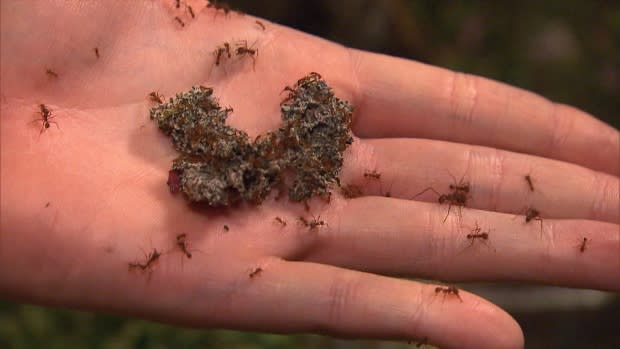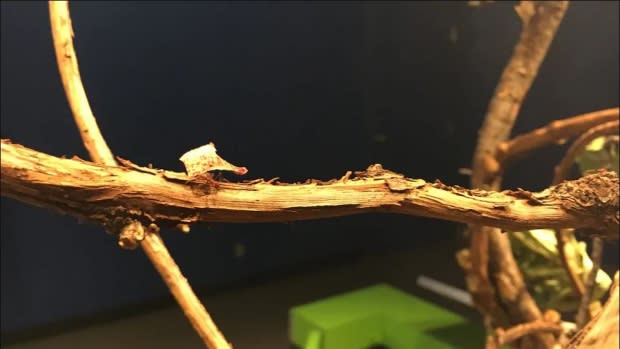The Insectarium has closed for upgrades. Now, to move 30,000 ants
When the time comes to move a colony of some 30,000 leafcutter ants that live in a mushroom across the city, what exactly does one do?
This is a challenge faced by the Montreal Insectarium, which closed on March 11 to upgrade its facilities and collections.
Part of the changes involve moving the colony of Atta Texana ants, a leafcutter species of the Atta genus, native to the southern U.S.A. and Mexico.

The ants' destination is a sort of retirement home at a McGill University lab. The colony, at eight years old, is nearing the end of its life.
With a population of as many as 30,000 insects, the colony is the largest single species in the Insectarium, said Maxime Larrivée, director of research and collections there.
"It's probably 80 per cent of the total number of living organisms that will leave the museum," Larrivée said.
The ants will be placed in a bin made of a special plastic to prevent escape, which in turn will be sealed in a plastic bag.
Thus packaged, the insects will journey in a heated van from the Insectarium, located near Olympic Stadium, to their new home at McGill. The Insectarium hopes to complete the move on Monday.

Oh, and, to make things more interesting, these ants live in a huge, fragile mushroom with which they enjoy a symbiotic relationship.
"The mushroom is the vital component," said Dominic Ouellette, an entomologist at the Insectarium who is overseeing transport of the colony. "If the mushroom dies, the colony dies."
It perhaps goes without saying that moving 30,000 ants and a fragile mushroom is even more perilous than just moving 30,000 ants.
The ants cultivate the fungus, their food source, by feeding it leaves. If the ants get stressed out during transport, or if the temperature variation is too great, they will leave the fungus, which could quickly lead to the death of the colony.
"The hard part of this move is that each colony behaves like an individual," Ouellette said. "We have to meticulously care for the mushroom. A minor stress could destroy the colony completely."
The main risk is temperature, Ouellette said. "A simple change can stop the queen from laying eggs."
Making way for new species
In the Insectarium's basement, new colonies are being nurtured to replace the Atta ants. There are army ants from Trinidad and Tobago that are several centimetres long and particularly voracious.
The Insectarium plans to focus on visually impressive species for its reopening.
"We're going to bet on flamboyant species, scarab beetles, iridescent beetles, very colourful," Larrivée said.
The Insectarium's metamorphosis will see it emerge in the summer of 2021 with a more immersive experience than in the past, with more opportunities to get close to insects. The facility's surface area will be nearly 70 per cent larger when it reopens in the summer of 2021.
Watch this video about the Insectarium's ant colony made by ant aficionados Ants Canada:

